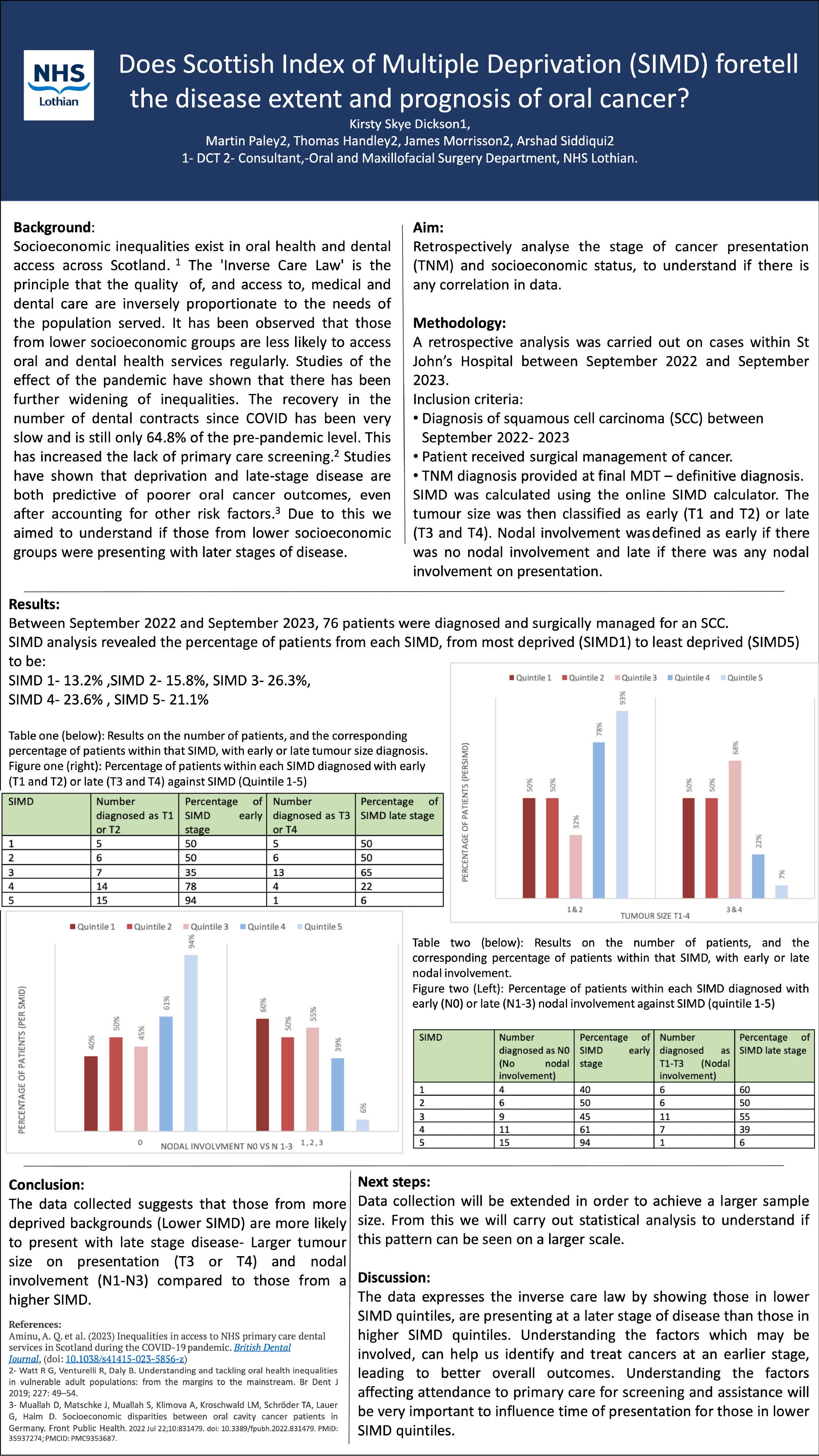Does Scottish Index of Multiple Deprivation (SIMD) foretell the disease extent and prognosis of oral cancer?
not provided
Kirsty Skye Dickson
Martin Paley, Thomas Handley, James Morrison, Arshad Siddiqui
Objective: Studies have shown an increased incidence of oral cancer amongst those from more deprived communities. With widening health inequalities, it is important to understand if the presenting disease extent is influenced by socioeconomic factors. The inverse care law describes how the availability of medical care varies inversely with the need for care. We aim to understanding if the stage of disease at presentation, is shaped by socioeconomic status.
Methods: Records of patients who received cancer treatment between 09/2022- 09/2023 were analysed. The patient’s TNM staging diagnosis was and compared to level of deprivation, using the Scottish Index of Multiple Deprivation. Categorising deprivation from 1- most deprived to 5- least deprived, based on their postcode.
Results: Between 09/2022 and 09/2023, 75 patients were seen for treatment of head and neck cancer at St John’s Hospital. In terms of nodal involvement, 6% of individuals from SIMD 5 (least deprived) had lymph node involvement on presentation. Whereas 60% of individuals from SIMD 1 (most deprived), had nodal involvement on presentation. In terms of tumour size, 93% of patients from SIMD 5 (least deprived) presented with an early stage tumour (T1 or T2). Whereas only 50% of individuals from SIMD 1 (most deprived), presented with an early stage tumour.
Conclusions: This descriptive study demonstrates those from higher socioeconomic backgrounds present, to the NHS Lothian maxillofacial department, at an earlier stage of disease when compared to those from a lower socioeconomic background. This study demonstrated the inverse care law and the need to improve access to those in lower socioeconomic groups. Those from lower socioeconomic groups are currently being disproportionally disadvantaged as late stage diagnosis has poorer prognosis. Understanding how to diagnose and treat individuals from lower socioeconomic groups, in the earlier stage of disease, is a priority when aiming to improve patient outcomes.

